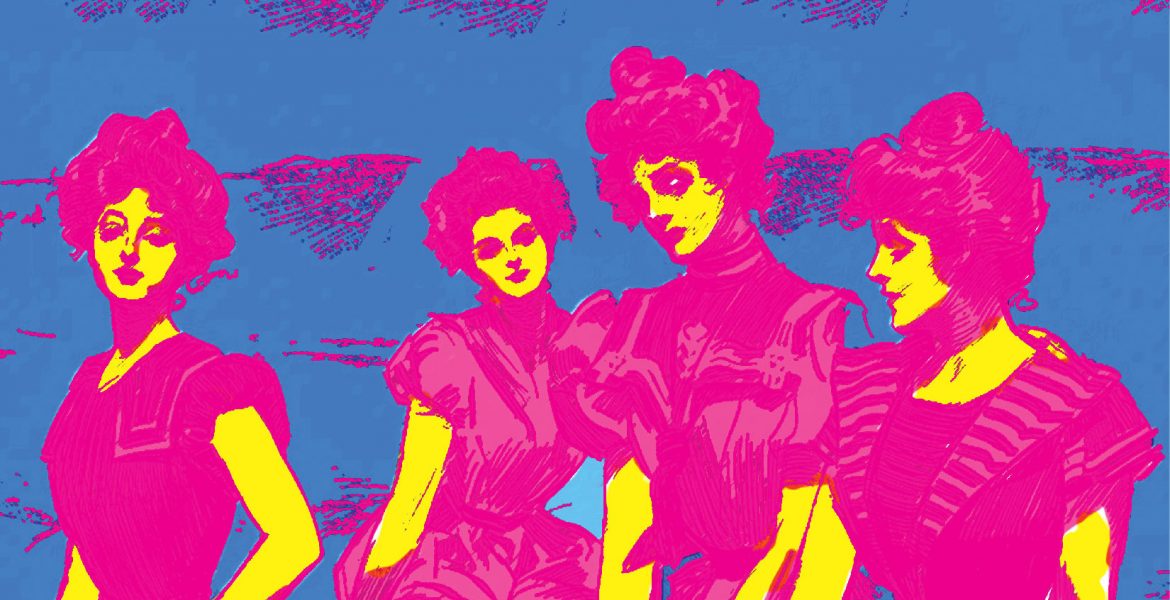Why do we pout while taking selfies? Is it because we enjoy capturing goofy moments with our friends or is there more to the story? What about editing photos to make our skin appear lighter or holding the camera at angles that flatten our bodies? All of this is done in good humour and probably doesn’t matter. After all, we love ourselves just the way we are. Or, do we?
Come to think of it, had we truly loved ourselves we would be happy with however we looked in whatever clothes from whichever angles we took our photographs? Despite being God’s greatest creations, we are way too concerned with the way we look. Women, around the world put immense work into looking great and feeling fabulous that we wonder whether this scrutinises our genes to do so or is it the doing of the social construct we live in?

is currently pursuing his Masters in creative writing at Washington University
Fashion as a concept, at least commercial fashion that we know today, is only a more than two hundred years old. It is changing at a pace so fast that every decade creates an impact as strong as Renaissance. It took the Rubenesque form of female beauty two hundred years to lose its appeal. The pear shaped roly-poly ladies with pudgy limbs in the paintings of Flemish painter Paul Rubens established a standard for female beauty in Europe in the early seventeenth century. They were portrayed as weak, helpless, and at the mercy of strong burly men who would torture and abandon them as they pleased.
Then came the Gibson Girls. Charles Dana Gibson asked his loving wife to be his model for the sketches. Later he took the curves from the Rubenesque women gave them very thin waists, slender necks, and hair all neatly tied on top of their heads. Between1980 and 1910, the girls portrayed in this popular cartoon sketch became widely popular in America. They became the face of the middle and upper-middle class women. These were sensitive with strong hearts and made men go weak in their knees. These soft spoken, round shouldered elegant ladies wore corsets which squeezed their waists to sixteen inches and pressed their bosoms outwards, making them appear unrealistically curvy. They were still being objectified to say the very least, but they were now objects of desire and respect, rather than being an object of neglect and belittlement. Gibson Girls probably would have continued for many decades, had it not been for wartime.
But today, only a century later, the movement to defy any objectification of the female body and female beauty is finally gaining momentum. The pressure on the western world of fashion to accommodate the philosophy of being body positive is more than ever. Body positivity is a state of mind which makes a person feel good in their skin, just as it is. The pros and cons of this movement can be debated, and only time can tell us how long this attitude towards beauty is going to prevail. But big brands like H&M and American Outfitters have started to break down the ‘cookie cutter’ mindset about beauty of the ‘heroine chic’ beauty of the 90’s (think Kate Moss), and the size zero yet curvy body (think Gisele Bundchen) of the first decade of this century. They have put plus size models on the runway, and on commercials, and the results are showing. By promoting plus size workout clothing, the American Outfitters have boosted their sales by six percent in a quarter this year.
The famous small headed long legged, pencil thin Barbie, too, is now a thing of the past. The dolls now come in three different fitness levels and five ethnic skin tones. But most of the little girls in the world don’t have access to those Barbie dolls. According to comedian Tina Fey: “Now every girl is expected to have Caucasian blue eyes, full Spanish lips, a classic button nose, hairless Asian skin with a California tan, a Jamaican dance hall figure, long Swedish legs, small Japanese feet, the abs of a lesbian gym owner, the hips of a nine-year-old boy, the arms of Michelle Obama. The person closest to actually achieving this look is Kim Kardashian, who, as we know, was made by Russian scientists to sabotage our athletes.”
How ready is the rest of the world for body positivity?
It will take more than fashion to stop South Korean girls from undergoing cosmetic surgeries to get double-lid eyes and pointy chins. It will take more than health awareness in Nigeria to stop seventy-five percent of their female population from using skin whitening products. It will take more than a television commercial in Bangladesh to motivate to love your natural body. They need affirmation from their family, their schools, their neighbourhood to be able to appreciate their natural features, and that they can achieve without cutting ties with fashion.
Being body positive and being fashionable is not mutually exclusive. A person can be overweight or dark, have a flat nose or any other feature that is not trending and still feel fashion-forward, fabulous, beautiful, and above all love-worthy. All she needs to do is learn to strike a positive, and not strike a pose. If the aspect of being body positive stands the test of time, Bangladesh will be riding on the wave too. The main challenge for us is that our society does not have the level playing field for men and woman as of yet. Unless we don’t achieve gender equality at all levels and prevent objectification of women, we won’t be able to build on to this momentum. Just like fitness gyms that mushroomed at the beginning of 2010 in the major cities to attract female health freaks, body positivity will end up being a passing fad.

